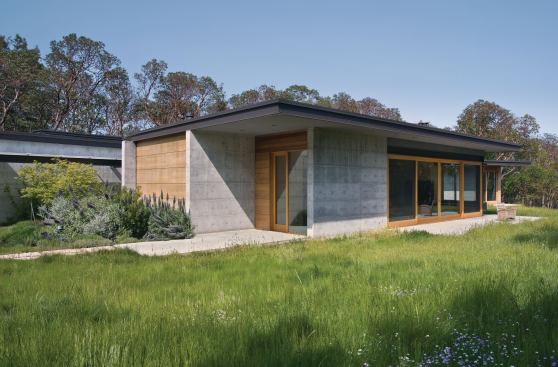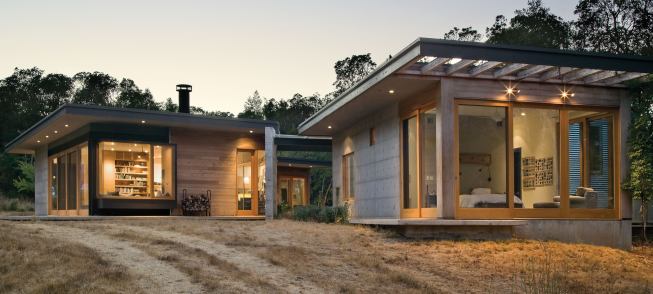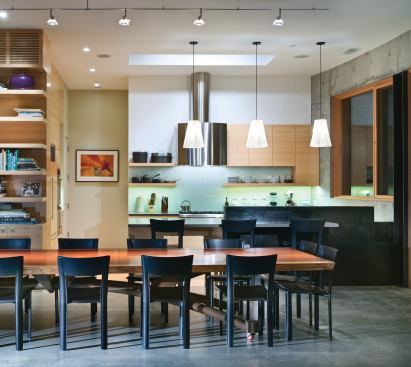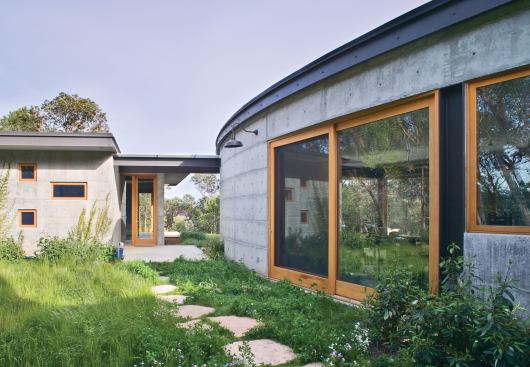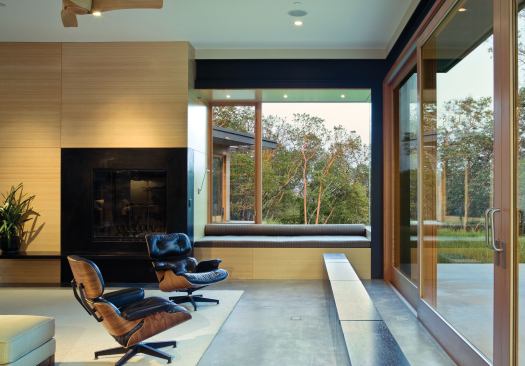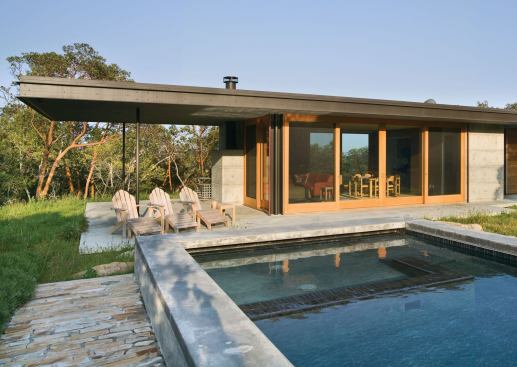Jeremy Jachym
Native grasses, which require little or no watering, naturally g…
Project Credits
Builder: Redhorse Constructors, San Rafael, Calif.
Architect: Kao Design Group, Somerville, Mass.;
Living space: 3,000 square feet;
Site: 55 acres;
Construction cost: Withheld;
Photographer: Jeremy Jachym, except where noted
Resources: Bathroom fixtures: Hansgrohe, Kohler Co., Porcher, TOTO USA; Countertops: CaesarStone USA, Cosentino USA (Silestone); Dishwashers: Kenmore, Miele; Entry and interior doors and windows: Dynamic Architectural Windows & Doors; Garbage disposer: In-Sink-Erator; Insulation: GreenFiber; Kitchen fixtures: Grohe America; Oven: Electrolux Home Products (Frigidaire); Paints: Cloverdale Paint; Range: Wolf Appliance; Refrigerator: Sub-Zero.
Details: Cool Mix As a green building material, concrete has a lot going for it: It provides thermal mass, requires little or no maintenance, and is very durable.
Its green Achilles’ heel is in the production of its active ingredient, portland cement, which consumes vast quantities of fossil fuel (about 1 million BTUs per yard of concrete) and water and is responsible for a significant chunk of CO2 emissions. “It’s a huge gas-guzzler,” says custom builder David Warner. He reduced the carbon footprint of his new house with concrete mixes that replaced up to 40 percent of the usual Portland cement with flyash, a by-product of coal combustion.
Warner treated the interior slab floors with only a water-based sealer, allowing the concrete’s mottled gray finish to show through. “On the outside,” he says, “we came up with a forming pattern”—a 3/8-inch gap between form boards that corresponds to the reveal between courses of the adjacent redwood siding—“so we have strong horizontal lines, as well as dehydration marks.” The low-embodied-energy concrete mix yielded surfaces that are nearly bombproof, virtually maintenance-free, and, as Warner points out, combine structural and finish layers. “It behaves well, and it looks great,” he says.
The Builder: Ways and Means
David Warner is no stranger to the pages of this magazine. We covered him and his company in depth a couple of years ago, when we named him Custom Builder of the Year, and he remains a valued source on custom building in general and on green building in particular. What has always impressed us about Warner is the comprehensiveness with which he approaches green building. To Warner, a green project takes into account not only the sustainability of the building, but also its relationship to both the immediate natural environment and the manmade environment of laws and regulations that govern land use and construction.In building his own house, Warner says, “We were very tight to doing what I do with my clients.” The starting point, as always, was the land itself. “We had all these biological resources we wanted to maintain,” he says, including a pair of northern spotted owls. “There’s only 2,000 nesting pairs left in the world, and we have a pair on our property”—all the more reason to minimize the impact of development.
In that department, as it has for his clients, Warner’s knowledge of the regulatory environment paid off. Negotiating a lower tax rate in exchange for relinquishing development rights, Warner protected both the natural environment and his family finances. “If you retire entitlements, you can get tax breaks. So from an investment standpoint, you’re not giving up value. For estate planning purposes you might be gaining value.” The value this kind of thinking brings to Warner’s clients is clear, and it reflects his belief in the power of the positive solution. “Saving the resources for everyone in the community and getting a tax write-off,” he says. “It’s a win-win.”
